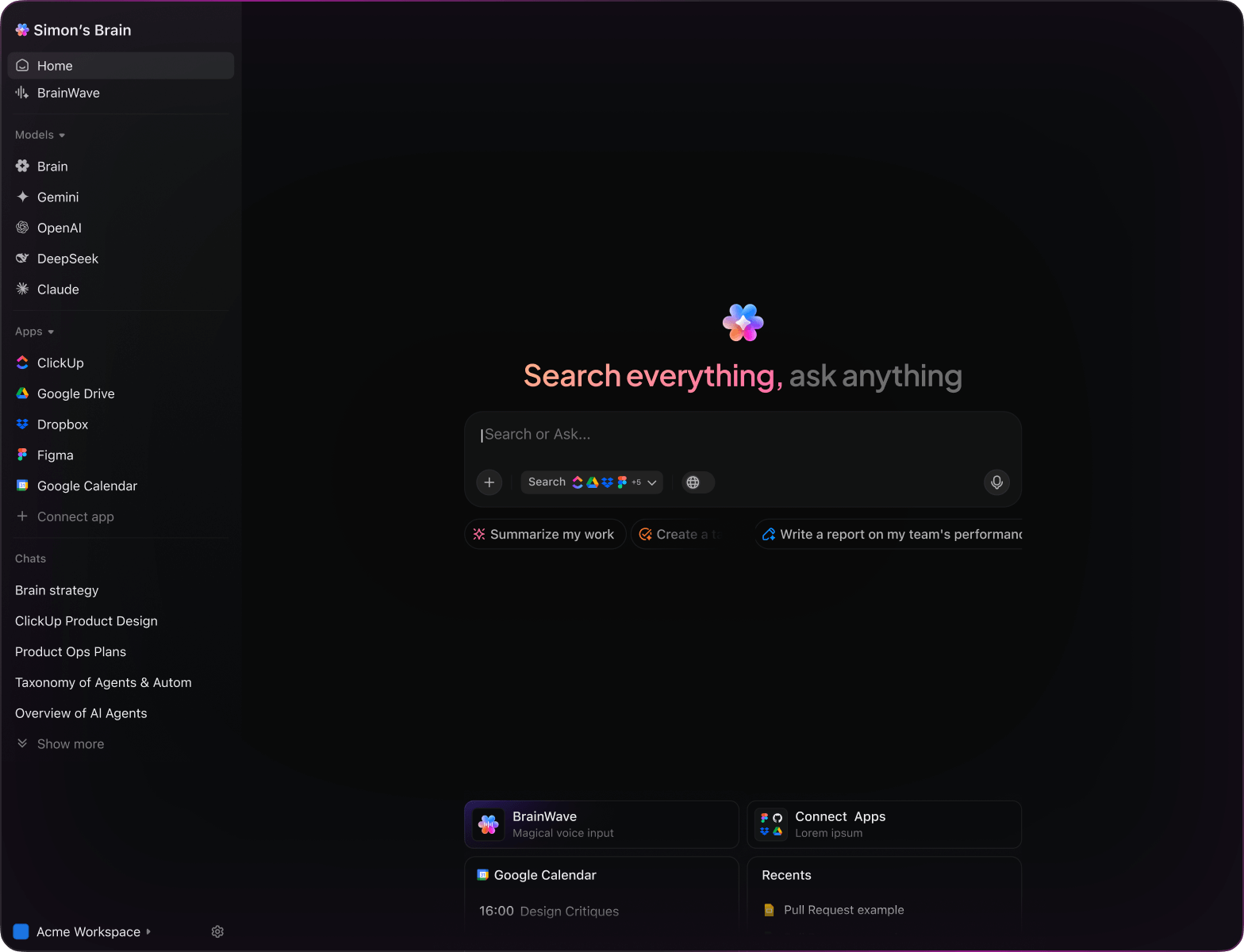AI Language Creation
Top AI Prompts for Inventing New Languages
Craft unique languages, organize your creative process, and elevate your linguistic projects with ClickUp Brain.
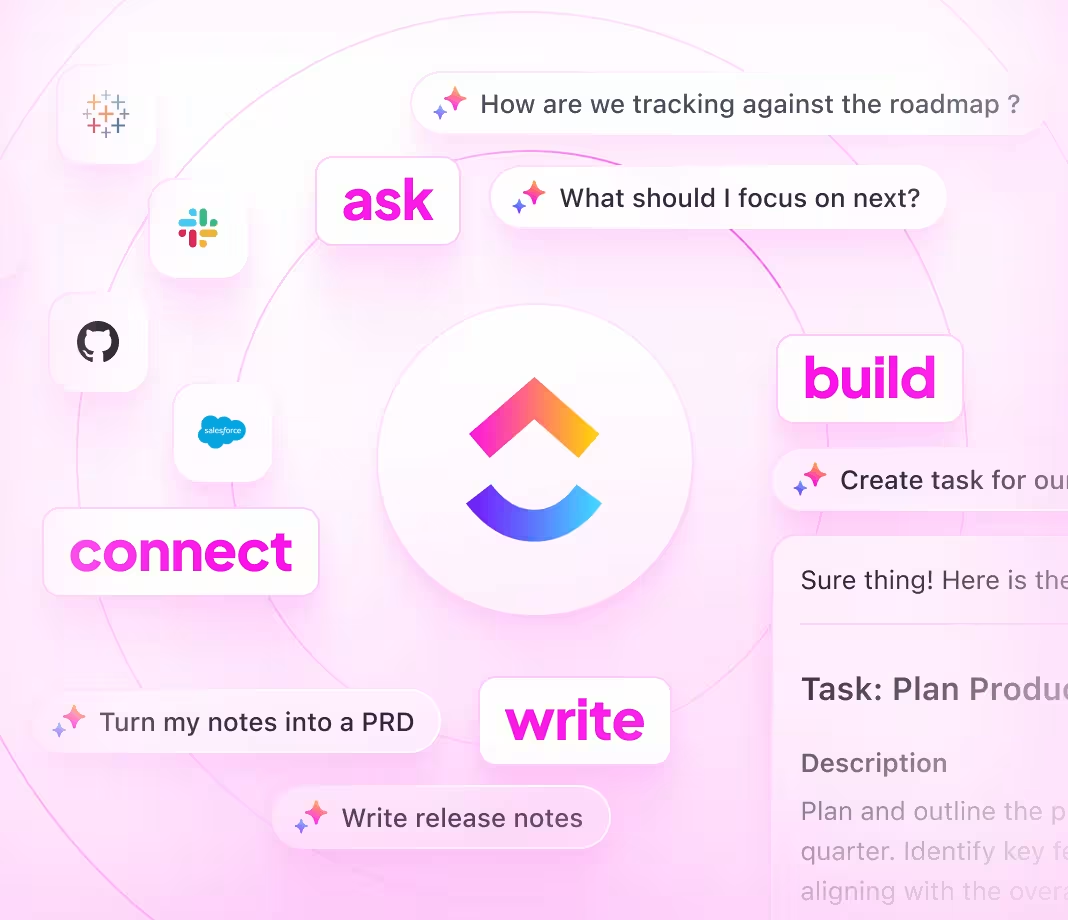
Trusted by the world’s leading businesses
AI in Language Innovation
AI Prompts Revolutionizing Language Creation Workflows
Crafting entirely new languages goes beyond inventing words—it's about building systems that communicate ideas clearly and creatively.
From phonetics and grammar rules to vocabulary expansion and cultural context, inventing languages involves numerous intricate steps—and countless notes, revisions, and iterations. This is where AI prompts prove invaluable.
Creators now leverage AI to:
- Quickly generate linguistic patterns and syntax examples
- Draft vocabulary lists, grammar structures, and usage scenarios with ease
- Analyze and summarize linguistic research and inspiration sources
- Transform brainstorming notes into organized language frameworks and development plans
Integrated into everyday tools like documents, brainstorming boards, and project trackers, AI in platforms such as ClickUp Brain acts as a silent collaborator—turning your creative sparks into structured, manageable progress.
ClickUp Brain Compared to Conventional Solutions
Why ClickUp Brain Stands Apart
ClickUp Brain integrates seamlessly with your workflow, understanding your context so you can focus on creating, not explaining.
Standard AI Platforms
- Constantly toggling between apps to collect information
- Repeating your objectives with every query
- Receiving generic, irrelevant feedback
- Hunting through numerous tools to locate a single document
- Interacting with AI that only processes input passively
- Manually switching between different AI models
- Merely a browser add-on without deep integration
ClickUp Brain
- Deeply connected to your projects, notes, and team communications
- Retains your past interactions and objectives
- Provides detailed, context-aware guidance
- Consolidates search across all your resources
- Supports voice commands with Talk to Text
- Automatically selects the optimal AI engine: GPT, Claude, Gemini
- Dedicated Mac & Windows app designed for efficiency
Inventive Language Creation Prompts
15 Dynamic AI Prompts for Crafting New Languages
Accelerate your language invention process—conceptualize, analyze, and refine with ease.

Outline 5 unique phonetic systems for a constructed language, drawing inspiration from the ‘Phonology Concepts 2025’ document.
ClickUp Brain Behavior: Gathers phonetic patterns and sound inventories from the linked file to propose innovative phoneme sets.

Identify current trends in syntax structures for conlangs targeting sci-fi literature audiences.
ClickUp Brain Behavior: Combines insights from internal research and external linguistic studies to highlight popular grammatical frameworks.

Draft a language development brief focusing on minimalist grammar rules, referencing ‘Grammar Notes #12’ and previous project annotations.
ClickUp Brain Behavior: Extracts key points and textual data from linked documents to assemble a clear, actionable brief.

Compare verb conjugation paradigms between ‘Lang A’ and ‘Lang B’ using our ‘Conjugation Patterns Q2’ document.
ClickUp Brain Behavior: Analyzes tabular and narrative data from internal sources to deliver a concise comparative summary.

List primary morphological typologies used in constructed languages, referencing R&D notes and linguistic resource files.
ClickUp Brain Behavior: Reviews internal documents to identify common morphological categories and their defining features.

From the ‘Phoneme Inventory Validation’ document, generate a checklist for phonetic consistency testing.
ClickUp Brain Behavior: Extracts evaluation criteria and formats them into a structured checklist within a task or document.

Summarize 3 emerging trends in semantic field development from recent linguistic research and project notes.
ClickUp Brain Behavior: Detects recurring themes and patterns across linked research materials and annotations.

From the ‘User Feedback Q1’ document, summarize key preferences for language learning app interfaces.
ClickUp Brain Behavior: Analyzes survey data to identify common user interface desires and usability insights.

Compose engaging and clear instructional text for a language creation tutorial, using the style guide in ‘ToneGuide.pdf’.
ClickUp Brain Behavior: Extracts tone and style cues from the guide to generate varied, user-friendly copy suggestions.

Summarize recent updates in intellectual property laws affecting constructed languages and their implications for project design.
ClickUp Brain Behavior: Reviews linked legal documents and compliance notes to provide an accessible overview of relevant changes.

Generate guidelines for symbol placement and sizing in conlang scripts, referencing regional typography standards in our workspace.
ClickUp Brain Behavior: Extracts measurements and formatting rules from internal documents to create a compliance checklist.

Create a quality assurance checklist for language usability testing based on best practices and our ‘Usability Testing’ folder.
ClickUp Brain Behavior: Identifies key testing criteria from readable content and organizes tasks by evaluation category.

Compare cultural influences on vocabulary development across three constructed languages using our comparative analysis documents.
ClickUp Brain Behavior: Summarizes documented cultural factors into a clear, digestible format (tables or briefs).

What phonological trends have emerged in constructed languages designed for virtual reality environments since 2023?
ClickUp Brain Behavior: Synthesizes patterns from internal research notes, concept summaries, and uploaded studies.

Summarize major usability challenges reported in the ‘Language Learning Feedback’ folder, focusing on script legibility and memorability.
ClickUp Brain Behavior: Extracts and prioritizes user concerns from surveys, feedback notes, and tagged support tickets.
Invent New Languages Effortlessly with ClickUp Brain
Cut down on trial and error, unify your creative team, and produce innovative language concepts using AI-driven workflows.





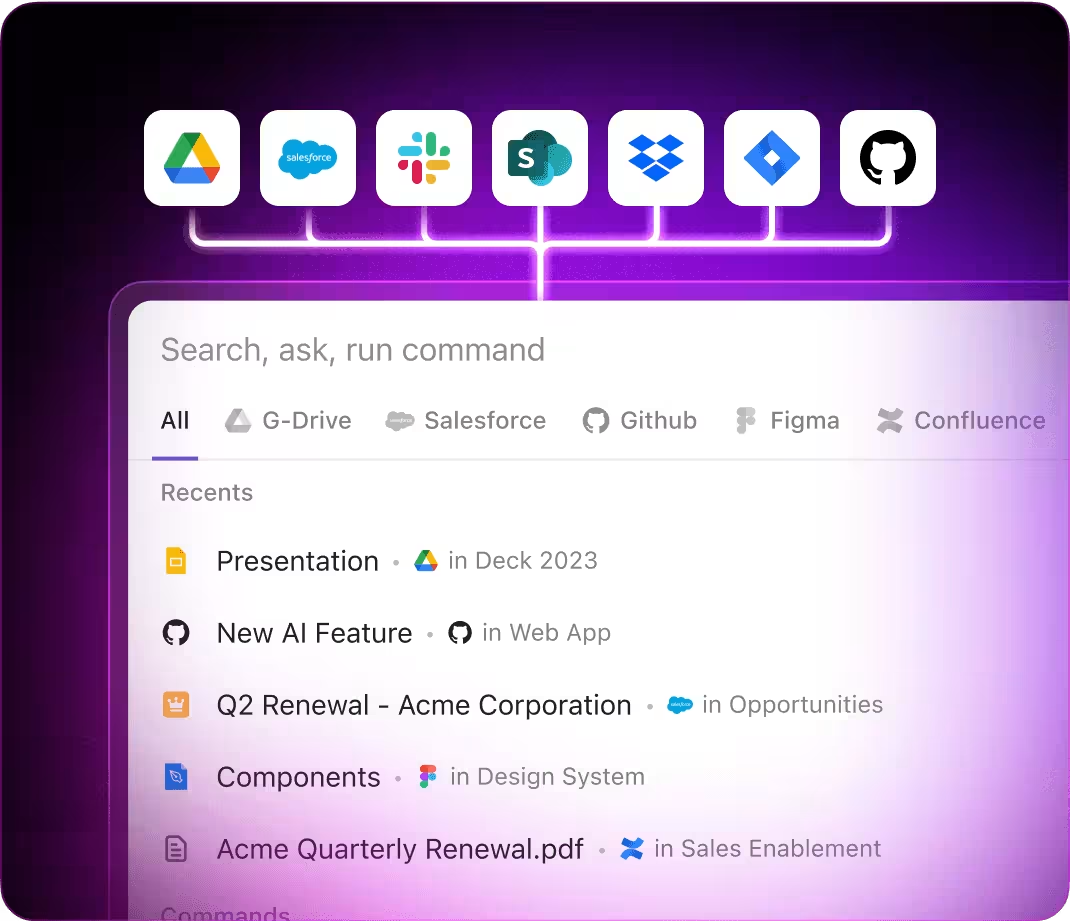
Crafting New Languages with ClickUp Brain
Discover How ClickUp Brain Empowers Language Creators Beyond Traditional AI Tools
ChatGPT Language Creation Prompts
- Outline a 5-point framework capturing the core grammar rules for a new constructed language.
- Compose engaging sample dialogues showcasing unique phonetic elements and cultural context.
- Generate three distinct alphabet styles and explain their symbolic meanings.
- Develop a stepwise guide for building vocabulary centered on everyday concepts.
- Compare syntax structures from three invented languages and summarize key innovations.
Gemini Language Design Prompts
- Propose three writing system concepts tailored for ease of learning and aesthetic appeal.
- Suggest innovative phoneme combinations that enhance expressiveness and memorability.
- Create a mood board description for a language inspired by ancient scripts and futuristic themes.
- Recommend grammatical gender systems for a constructed language and evaluate their inclusivity.
- Build a comparative chart of verb conjugation models focusing on simplicity and flexibility.
Perplexity Linguistic Insights
- List five cognitive principles to apply when designing language acquisition pathways.
- Compare historical language evolution patterns and their relevance to constructed languages.
- Summarize global trends in conlang communities and their preferred linguistic features.
- Generate five mnemonic devices to facilitate vocabulary retention and rank by effectiveness.
- Analyze previous language invention projects and extract three best practices for success.
ClickUp Brain Language Workflow Prompts
- Transform brainstorming session notes into prioritized language development tasks with deadlines.
- Summarize feedback from beta language learners and create actionable improvement tasks.
- Extract key design elements from phonetic analysis and generate review checklists for linguists.
- Compile collaborative discussions on grammar rules into organized task lists with assigned owners.
- Review user testing transcripts on language usability and produce targeted enhancement tasks in ClickUp.
Why ClickUp Works
Shape Your Language Ideas Into Clear Plans
- Quickly transform scattered thoughts into detailed language blueprints.
- Draw inspiration from previous language projects to fuel innovation.
- Build custom templates that accelerate your language creation process.
Brain Max Boost: Effortlessly explore earlier language drafts, critiques, and reference materials to spark your next invention.
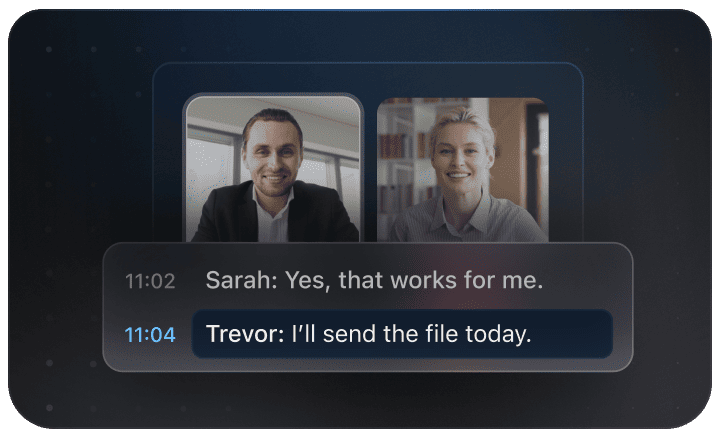
Why ClickUp Works for You
Accelerate Language Creation Collaboration
- Break down intricate language concepts into manageable tasks.
- Transform brainstorming sessions into structured, assignable items.
- Instantly produce summaries and progress reports without extra effort.
Brain Max Boost: Quickly access previous language models, grammar rules, or vocabulary lists across your projects.
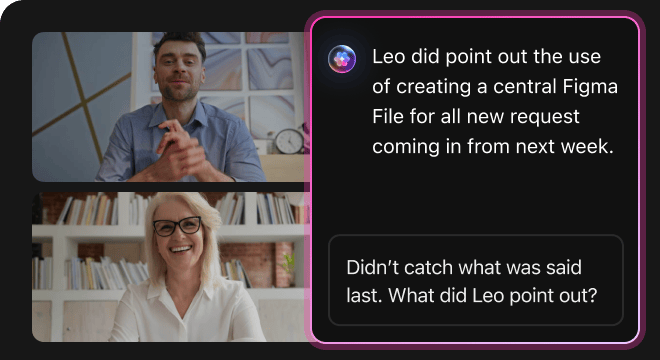
AI Advantages
How AI Prompts Elevate Every Phase of Language Creation
AI prompts accelerate creativity and inspire richer, more expressive new languages.
Craft Fresh Language Ideas Quickly
Linguists explore innovative concepts rapidly, refine creative choices, and overcome writer’s block.
Enhance Linguistic Design Choices
Make informed decisions, reduce guesswork, and develop languages that resonate with users and communities.
Spot Flaws Early to Save Time
Prevents expensive revisions later, boosts language consistency, and accelerates development timelines.
Align Teams Across Linguistic Projects
Improves communication, removes misunderstandings, and accelerates consensus among creators, coders, and testers.
Drive Groundbreaking Language Features
Ignites creative breakthroughs, supports novel grammar and vocabulary, and keeps your language unique.
Integrated AI Support Within ClickUp
Transforms AI-generated insights into actionable tasks that advance your language-building projects.
Speed Up Your Language Creation
Cut down mistakes, simplify collaboration, and generate insightful results using AI support.





